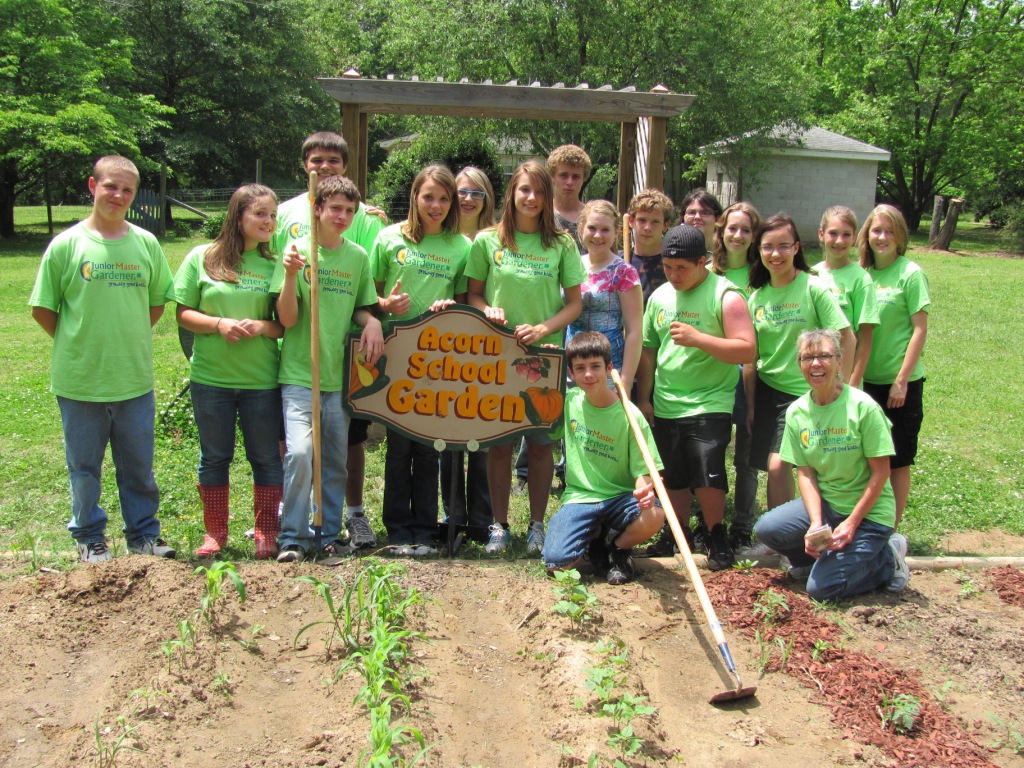
Close your eyes and picture a familiar place such as your home, your neighborhood, or anywhere in your community. Think of this place as your habitat. There are many places within your habitat that might be important to you or your students.
Use Activity 96, Improve Your Place from PLT’s PreK-8 Environmental Education Activity Guide to encourage students to develop and implement a project that focuses on making positive changes in their habitat. Students will use science, technology, engineering, and math (STEM) to plan and implement a service-learning project.
 Getting Started: To begin, consider forming a Green Team made of students, school faculty, parents, and community volunteers. Once the Green Team is assembled, use recommendations in PLT’s Activity 96 to identify one thing about your habitat the team would like to improve. Then, take the team to the project location to survey the area and outline an action project.
Getting Started: To begin, consider forming a Green Team made of students, school faculty, parents, and community volunteers. Once the Green Team is assembled, use recommendations in PLT’s Activity 96 to identify one thing about your habitat the team would like to improve. Then, take the team to the project location to survey the area and outline an action project.
If greening your school is a goal for your team, use PLT’s GreenSchools Investigations to help students discover ways to use STEM to save energy, conserve water, improve schoolyard habitats, reduce waste, and/or improve air quality.
Essential Question: What can the Green Team do to make your school greener and healthier, and save money? (Next Generation Science Standards: 5-ESS3-1 – Earth and Human Activity.)
Product: Students will apply science, technology, engineering, and math skills to develop an action plan that is focused on making their school greener, healthier, and cost efficient. (Next Generation Science Standards: 5-ESS3-1 – Earth and Human Activity)
STEM Strategies
Here are some ideas for ways students can apply their STEM skills in conjunction with PLT’s PreK-8 Activity 96, Improve Your Place or PLT’s GreenSchools Investigations.
Science
Have students generate hypotheses as they investigate the project location. What are the expected results of the project that the team hopes to achieve? How will they measure whether the project was successful?
Technology
Ask students to collect digital video and photographic evidence while investigating their project site. For example, students can document damaged weather seals on doors and windows, leaky water fountains, and underutilized or overgrown outdoor spaces. These photos and videos can be used in project proposals to visually communicate the need for the improvement project. Once the project is complete, the images will serve as a reference for how much the project location changed as a result of the Green Team’s efforts.
Engineering
Once the improvement project is selected and students have generated a hypothesis, have students brainstorm 3-4 solutions for testing their hypothesis. As a team, discuss the possible outcomes and effectiveness of each solution and ways to evaluate them. For example, what is the cost, is the solution difficult to implement, and what are the time implications? The team can then compare and contrast each solution and determine the best way to implement their service-learning project.
Math
Have students conduct a cost-benefit analysis for their improvement project. These estimates must include the costs for things like labor and materials. School administrators and maintenance staff would be helpful to consult during this process.
Additional Resources
- Register your school to gain access to PLTs GreenSchools Investigations, or purchase a printed copy.
Don’t have PLT’s PreK-8 Environmental Education Activity Guide?
- Purchase a print guide or e-book, available from PLT.org, Amazon and other places where books are sold.
- Get it through your PLT State Coordinator along with hands-on professional development, alignments to state standards and other state-specific supporting resources.
Don’t consider yourself a formal teacher?
- Check out PLT’s Around Your Home family activities. We have 40+ activities for families that can be easily used by parents, grandparents, youth group leaders, nature centers, and other nonformal programs.



One comment on “STEM: Improve Your Place”
Thanks for sharing this article.